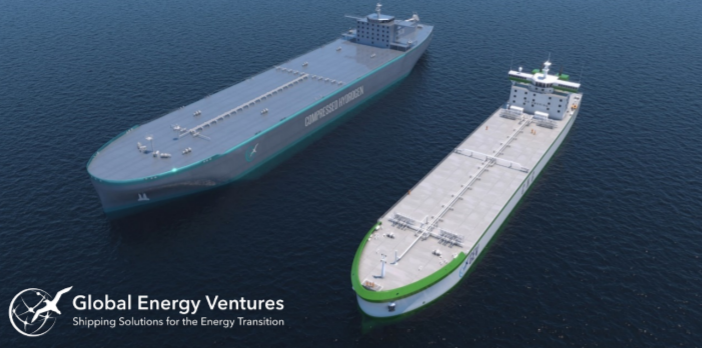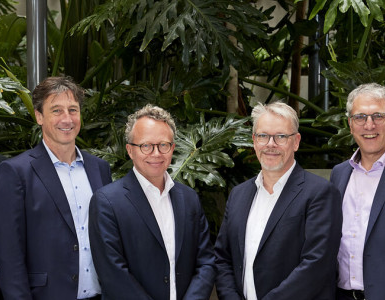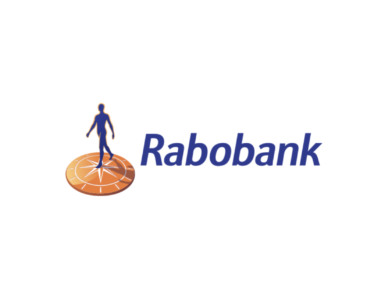Global Energy Ventures to develop 2,8 GW green hydrogen export project Tiwi Islands, Australia
Global Energy Ventures Ltd (ASX: GEV, the Company) announce the development of a 2.8 GW /
100,000 tpa of green hydrogen export project on the Tiwi Islands, Northern Territory, Australia (the Tiwi Hydrogen Project). GEV is proposing a staged approach to construction, with an initial development phase of ~0.5 GW of installed solar generation, expanding to 2.8 GW as the regional hydrogen market grows, as well as benefitting from the ongoing cost and efficiency improvements in photovoltaics, electrolysers and shipping.
Martin Carolan, GEV’s Managing Director and CEO commented:
The strategic rationale for GEV to develop a landmark upstream renewable energy and green hydrogen production project is to demonstrate the simplicity and efficiency of using compression for a pipe-to-pipe green hydrogen supply chain and to provide greater certainty in the commercialisation of our shipping solution.
“This project can transition GEV from a midstream service provider to an innovative hydrogen company.”
🔥 What about we co-host a webinar? Let's educate, captivate, and convert the hydrogen economy!
Hydrogen Central is the global go-to online magazine for the hydrogen economy, we can help you host impactful webinars that become a global reference on your topic and are an evergreen source of leads. Click here to request more details
“Our compressed shipping solution is highly modular and can therefore scale to match the advancement of electrolyser technologies and market demand for pure green hydrogen gas, and deliver a competitive cost of hydrogen as the project scales. The support of the Northern Territory Government also demonstrates the Territory’s strategy and vision to be a world-scale producer and exporter of renewable hydrogen.”
Hon Eva Lawle, Northern Territory Government Minister for Renewables and Energy commented:
I welcome GEV’s announcement that it has selected the Tiwi Islands for its renewable hydrogen project and that it is working closely with the Tiwi Land Council and the Traditional Owners of the land.
“With our world-class solar resources and our proximity to key export markets, the Northern Territory is an ideal place to generate renewable hydrogen to meet the future demand within our region. We look forward to supporting GEV through our investment facilitation team to progress the project through to operation.”
Global Energy Ventures to Develop 2,8 GW Green Hydrogen Export Project Tiwi Islands, Australia

MAJOR BENEFITS OF THE TIWI HYDROGEN PROJECT
Garry Triglavcanin, GEV’s Executive Director and Chief Development Officer commented:
Today’s announcement of the Tiwi Hydrogen Project is the result of over six months of research, analysis and consultation to gain the support of key stakeholders, including the Tiwi Land Council, the Munupi Landowners, Northern Territory Government, Tiwi Plantation Corporation, NT Port and Marine and a number of technology vendors.
“I would like to personally thank the Tiwi Land Council and the Munupi Landowners for welcoming GEV to the Tiwi Islands and their ongoing trust and support. The project will deliver social and economic benefits to the Tiwi community in the form of employment, skills training and education on a long-term sustainable basis.”
GEV has worked closely with key Tiwi stakeholders to ensure the project will have a low environmental impact on the Tiwi Islands. This has been achieved by selecting previously cleared and developed plantation land for the solar farm, existing right of way for the transmission line, as well as locating the hydrogen production facilities at an existing industrial precinct, adjacent to existing port infrastructure for export.
GEV has completed a prefeasibility level analysis that has identified this location as being highly suited to our compressed hydrogen shipping solution due to its close proximity to Asia-Pacific markets.
- LOCATION: the Tiwi Islands are located along the northern most part of Australia, providing GEV with a strategic location for regional shipping to the emerging hydrogen markets across the Asia-Pacific, including Singapore, Indonesia, South Korea and Japan (see Figure 2).HIGH SOLAR CAPACITY / INTENSITY: the proposed 1,800 hectare solar site has been assessed to have the potential for 2.8 GW of solar generation, in a region of high solar intensity.
- TRADITIONAL LAND OWNERSHIP: there has been an unbroken history of occupation and ownership of the Tiwi Islands by Tiwi people. Therefore, there are no native title issues for GEV to address, with a clear and established process for GEV, the Tiwi Land Council and Munupi Landowners to negotiate a Section 19 Lease/Licence for the proposed solar site.
- LOW ENVIRONMENTAL IMPACT: the proposed solar site is existing plantation land, previously cleared of native vegetation and currently used for commercial plantation (see Figure 1). The proposed solar site represents only 6% of the existing plantation area and only 0.3% of Melville Island land area. In regard to water supply for the initial phase of the project, the electrolysers are anticipated to consume up to 550 m3 /day of demineralised water for hydrogen production. Small-scale desalination facilities will be installed (seacontainer sized), with GEV also seeking to maximise the potential of local water catchment.
- PORT INFRASTRUCTURE: there is availability and access to existing port infrastructure and industrial precinct at Port Melville (owned by AusGroup Limited’s NT Port and Marine), capable of berthing GEV’s fleet of compressed hydrogen 430t pilot scale ships. GEV to introduce its full scale 2,000t ships as required to match future supply and demand (see Figure 1).
- COMPRESSION: utilising compression as the method to load, store and transport hydrogen avoids the complex and capital intensive process to ‘pack and unpack’ pure hydrogen gas required by other carriers such as LH2, NH3 or LOHC. This is an important consideration for the customer end of the supply chain.
- NT GOVERNMENT SUPPORT: GEV has the support of the Northern Territory Government, and GEV will seek federal infrastructure funding and support given the new, sustainable industry and economic opportunities for the indigenous communities on the Tiwi Islands and Territorian people in general.

MAJOR BENEFITS OF THE COMPRESSED HYDROGEN SUPPLY CHAIN
- The scalable nature of compression allows GEV to propose a staged approach to construction, with an initial development phase of ~0.5 GW of installed solar generation, expanding to 2.8 GW as the regional hydrogen market grows. This allows GEV and its customers to benefit from the ongoing cost and efficiency improvements in photovoltaics, electrolysers and shipping.
- The Tiwi Hydrogen Project leverages the unique benefits of GEV’s compressed hydrogen shipping solution, meaning no requirement for costly onshore hydrogen storage and minimal battery storage (as the production and loading of hydrogen will “load follow” the daily and seasonal solar generation profile).

NEXT STEPS
- GEV has and will continue working with the Tiwi Land Council and Munupi Landowners, given the
- responsibility to ensure that the Tiwi Hydrogen Project delivers community benefits to the Tiwi people, in the form of leasehold payments, employment, and supporting power and water infrastructure.
- GEV to fast track the installation of solar monitoring stations at several locations, allowing GEV to establish bankable solar generation data for the proposed project location.
- GEV to continue working with the Tiwi Plantation Corporation, Tiwi Land Council and Munupi Landowners to progress securing a Section 19 Lease/Licence over the proposed solar site. As the solar site has previously been cleared of native vegetation and zoned for plantation use.
- GEV to continue working with NT Port and Marine (a subsidiary of AusGroup Limited) to integrate Port Melville’s operations and facilities into the Tiwi Hydrogen Project.
- GEV to commence planning for a full feasibility. Including further information on the project development schedule, technical partners, project scale, solar monitoring activities and appointment of consultants. The project schedule will run in parallel with GEV’s ABS full class approval program for the 430t pilot scale ship.
- Financial close for the initial phase of the Tiwi Hydrogen Project is targeted for 2023, with first hydrogen export to commence in 2026, subject to all commercial and regulatory approvals and customer offtake.
ABOUT THE TIWI ISLANDS, TIWI LAND COUNCIL, TIWI LAND TRUST AND MUNUPI LANDOWNERS
There has been an unbroken history of occupation and ownership of the Tiwi Islands by Tiwi people. The Tiwi have never surrendered any of their land and have never had to concede that any part of their islands belongs to anyone but them.
The Tiwi people have proved through history that outsiders who want to come to the Tiwi Islands can only do so on Tiwi terms.
Land plays an important role in kinship and relationship networks, with each person belonging to a landowning group and having particular connections to spatially defined areas.
Similarly, there are aspects of managing and allocating land and natural resources that are inseparable from kinship and relationship ties. While landowning rights are inherited from the father, the responsibility for the care of important sites comes through the mother’s line.
There are eight Landowning Clans on the Tiwi Islands, with GEV’s Project entirely within the Munupi Landowning Clan.
The Tiwi Aboriginal Land Trust was established under the Aboriginal Land Rights Act 1976 (ALRA), with the Tiwi Land Council being the only body with the authority and capacity to direct and administer the Trust.
Some 20 years ago, the Tiwi leaders decided that they would use up to 10% of their land to create an economy, with real jobs for their children and grandchildren, and to remove Tiwi people from reliance on welfare and its associated poverty.
As a result, the Tiwi leaders established a number of commercial businesses and enterprises in order to create jobs and income for their people, including the independent business enterprise for the existing plantation industry being Tiwi Plantations Corporation.

HIGHLIGHTS
- GEV to develop a green hydrogen export project located on the Tiwi Islands, Northern Territory, with a phased capacity up to 2.8 GW (the Tiwi Hydrogen Project), producing up to 100,000 tonnes per annum of green hydrogen for export into the Asia-Pacific region.
- The Tiwi Hydrogen Project will deliver a fully integrated green hydrogen production and export supply chain, commencing with a fleet of GEV’s 430t compressed hydrogen ships.
- Selection of the Tiwi Islands location provides a brownfield site that can reduce development time and cost, as well as access to one of the closest Australian ports (owned by AusGroup Limited’s NT Port and Marine) to the future demand markets in the Asia-Pacific region.
- The integration of GEV’s innovative compressed hydrogen shipping solution enables a phased development and construction timeframe, thereby benefiting from the continued decline of the capital and operating costs for solar generation, electrolysers and shipping.
- The Tiwi Hydrogen Project has the support of key stakeholders, including the Tiwi Land Council, the Munupi Landowners, NT Port and Marine and the Northern Territory Government.
- Development milestones of the Tiwi Hydrogen Project will run in parallel to GEV’s ship engineering and class approval program, with a financial investment decision targeted for 2023 for the initial phase being 0.5 GW, allowing first hydrogen export to commence in 2026, subject to all commercial and regulatory approvals and customer offtake.
GEV TO DEVELOP 2.8 GW GREEN HYDROGEN EXPORT PROJECT TIWI ISLANDS, AUSTRALIA, October 27, 2021








